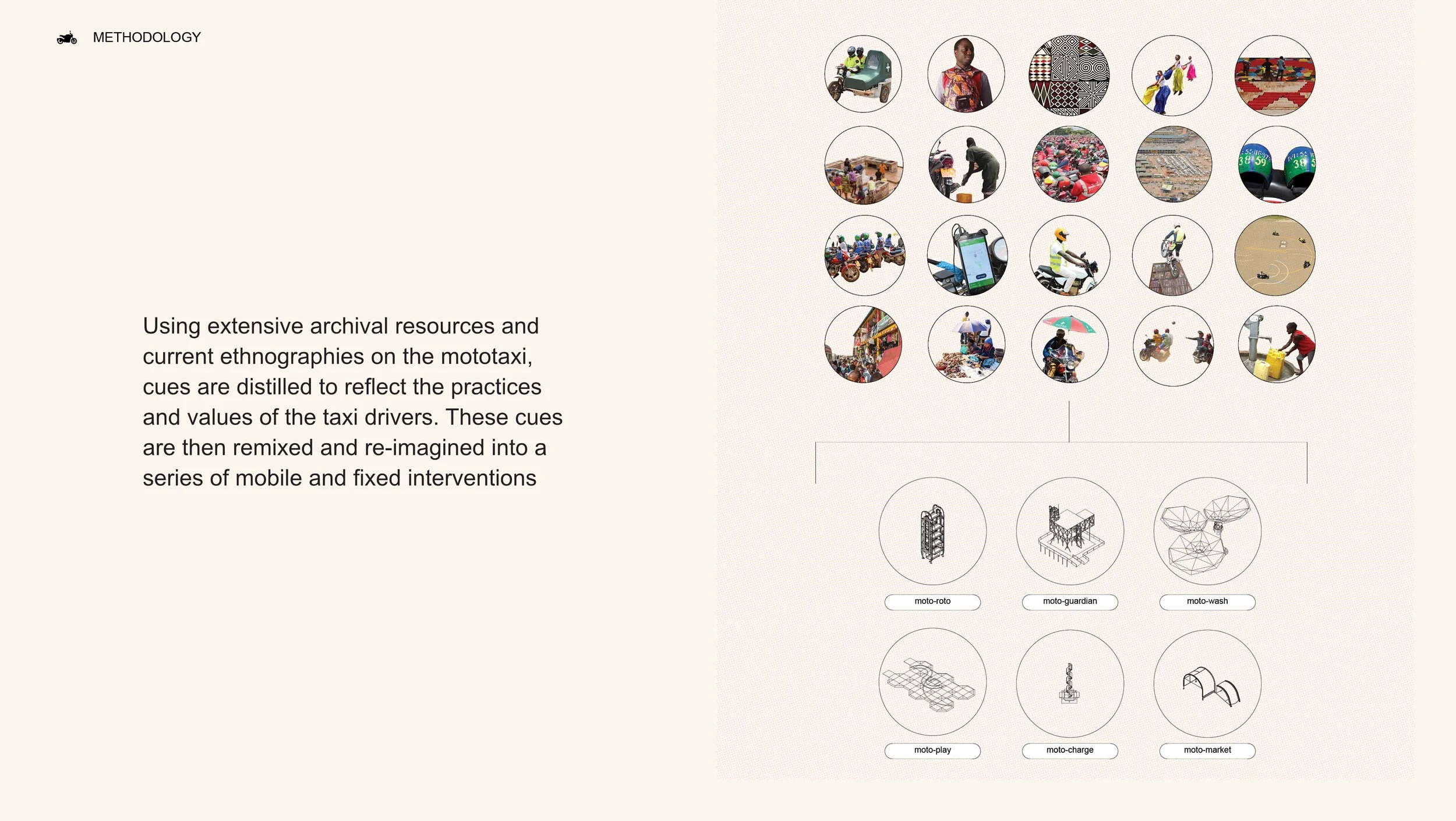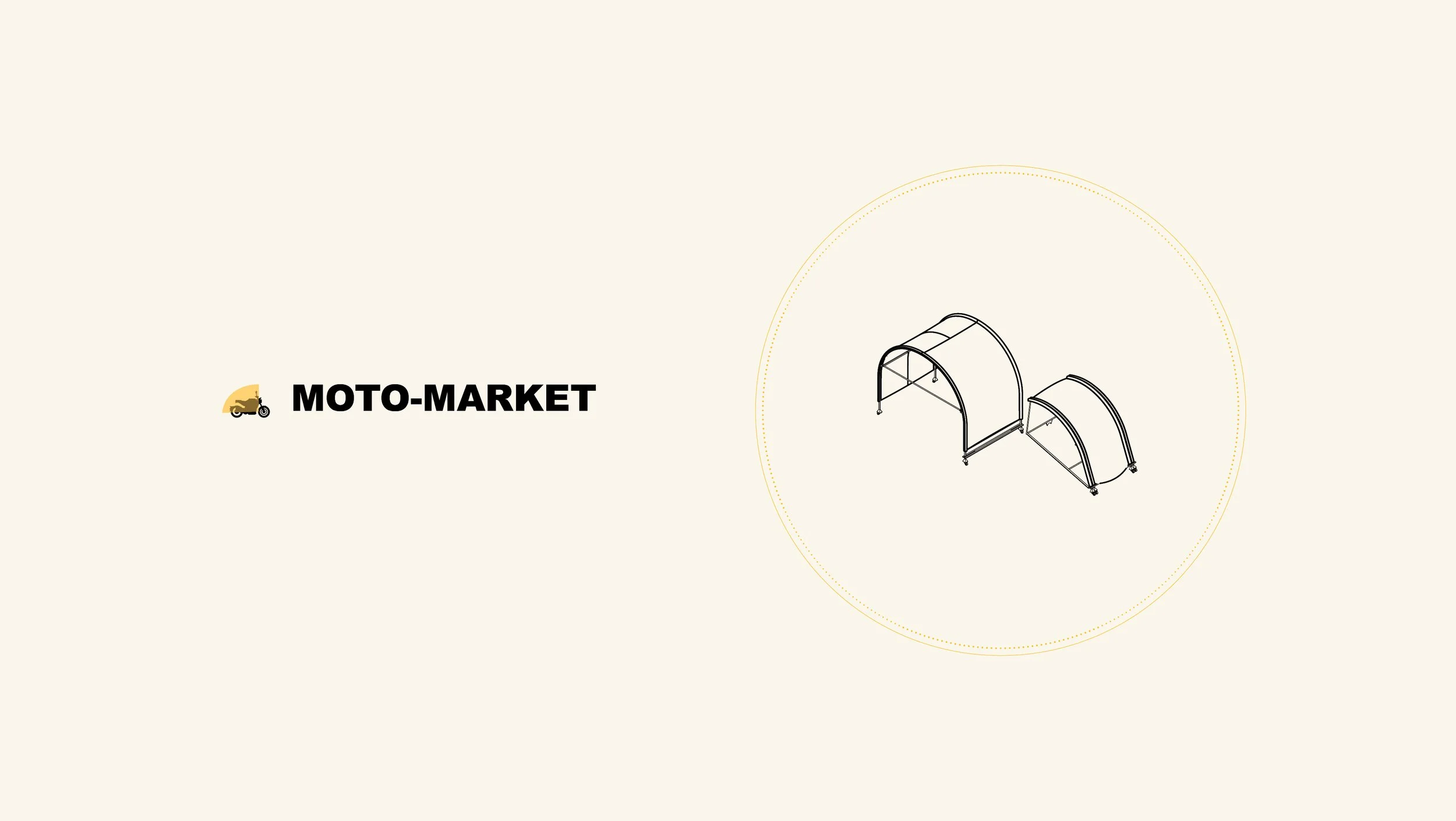Mototaxi of Kigali
Q. how can design render visible urban practices under threat of erasure due to rapid development?
[Click through the slides below to learn more]
-
Cornell University B’arch thesis, 2021.
Advisors: Andrea Simitch, Marta H. Wisniewska
-
Awarded best thesis prize, 2021
1.moto-charge
In an effort to modernize, many of the moto are converting into electric bikes, relying on ride-share apps. Moto-charge is a mobile accordion stack of solar panels to give mototaxi agency and control over where and when they can charge their bikes.
Accordion panels adapted from: Energy Environ. Sci., 2012, 5, 6880 “Solar energy generation in three dimensions”
2. moto-play
Many of the open spaces in the current city are informally occupied by both the mototaxi and the general public, for performance, art and play, including regular stunts and jumps from the mototaxi.
One of the biggest criticisms that authorities have against the moto stems from this reputation of recklessness, with traffic safety is the government’s most important concern. Moto-play is a mobile stage unfolding from a wheeled crate. These panels can be painted and repainted, for traffic safety training but also jump ramps balancing ostensibly opposing activities.
3.moto-market
There are two types of markets in Kigali facing extinction, the loggia market (arched corridors) and the open air market. Though the master plan is still only on paper, its effects have materialized as heavy policing and cleansing of the streets. One such market, maraton, or marathon, is named after the regular event of street vendors running away from police as they come to clear the stalls.
Moto-market recreates the loggia with temporary mobile arches that can be taken down and installed anywhere. These arches fold into rain-coverings for the moto-taxi, becoming mobile markers of current ways of life in a redeveloping city.
4.moto-roto
Moto-roto is a ‘machine’ designed to house motorcycles and their riders, proposing to integrate into the new bus station of the masterplan. Moto-roto is a moto-taxi hub, embedded in the very façade of the future station (assumed here to be designed as a bar parking structure).
Using an adapted vertical parking system for motorcycles, mototaxi enter from both sides of the station and park their bikes in the enlarged façade. The riders can then take advantage of the other program along the edge of the structure, such as cafes, storage unit and other gathering spaces.
5.moto-wash
Most clean water sources in Kigali are monopolized by the redevelopment. Yellow jerrycan networks and hand pumps fill the gap of water shortage. Mototaxi also rely on a constant supply of water. A clean bike is the difference between a good day of earnings and unemployment. Motowash is a rainwater collecting community made of multiple vessels providing laundry services, a moto-wash, a jerrycan library and disinfection station.




































